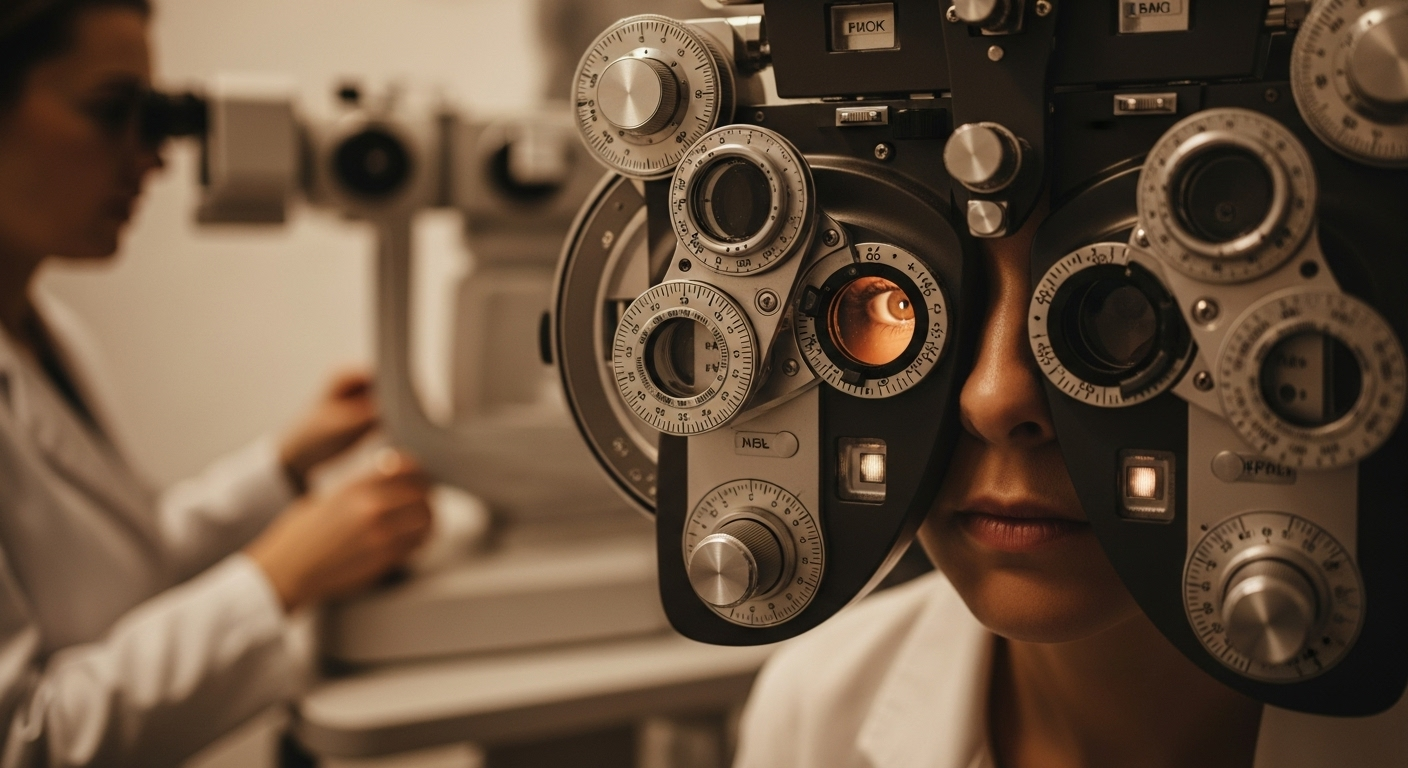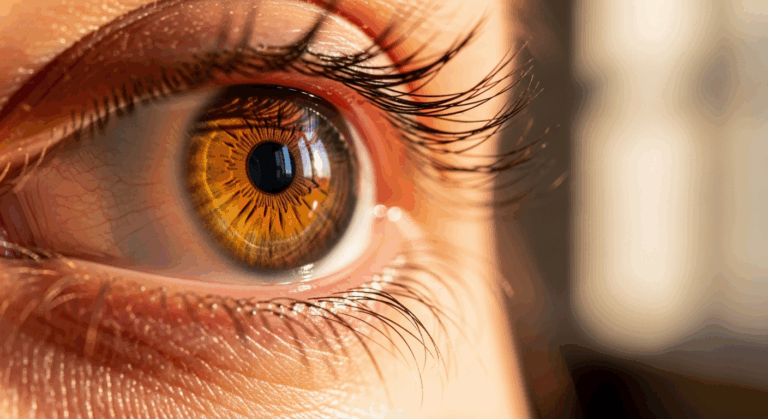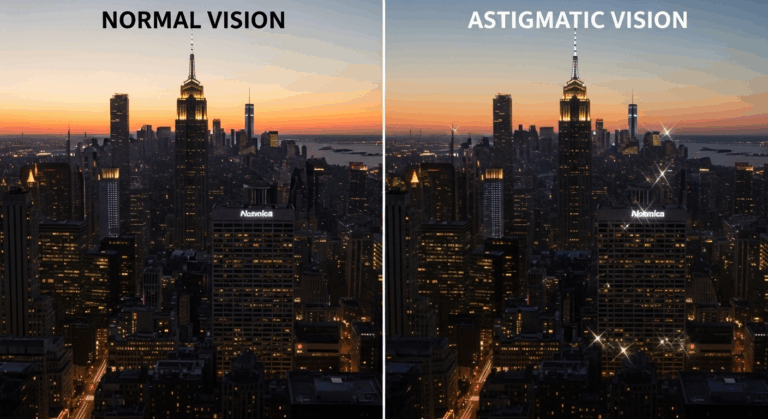So, you’ve just come from the eye doctor, and they tossed out a number: “You have 20/50 vision.” It sounds specific, but what does it actually mean for your daily life? Is it bad? Do you suddenly need to rush out and get glasses?
If you’re feeling a little lost in the numbers, don’t worry. It’s a question we hear all the time. Let’s break down everything you need to know about 20/50 vision in a way that’s simple and makes perfect sense.
What Does 20/50 Vision Actually Mean?
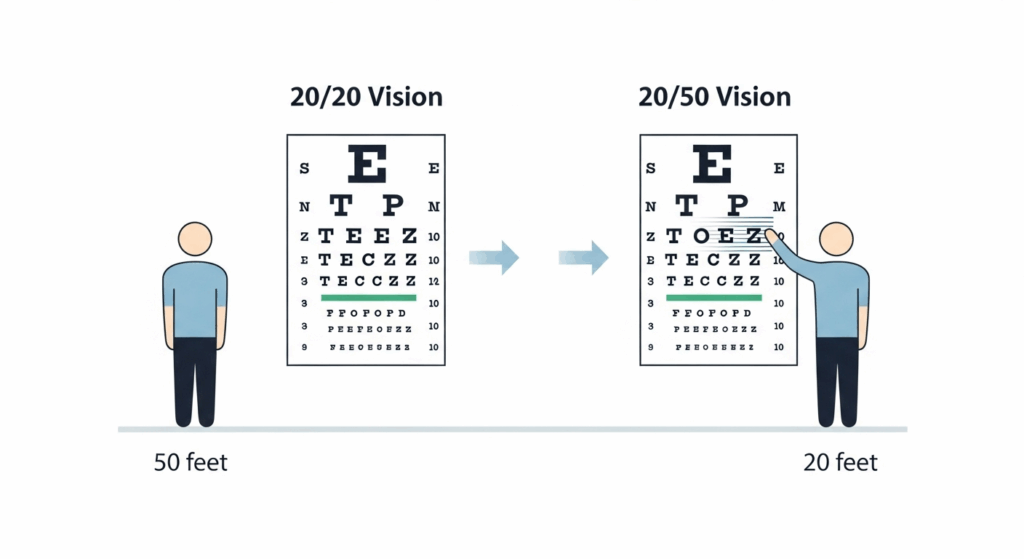
First things first, let’s decode that fraction. The term “20/50” comes from the classic Snellen eye chart—the one with the big “E” at the top. It’s a measurement of your visual acuity, which is just a fancy way of saying how clear and sharp your distance vision is.
Here’s the simplest way to think about it:
- The first number (20): This is you. It represents the distance in feet at which you are standing from the chart (20 feet is the standard).
- The second number (50): This is someone with “normal” or perfect vision.
So, 20/50 vision means that to see an object clearly, you need to be 20 feet away from it, whereas a person with 20/20 vision could see that same object just as clearly from 50 feet away.
Think of it like this: your friend with perfect vision can easily read a road sign from 50 feet down the road. You, however, might need to walk forward until you’re just 20 feet away to make out the same letters. It basically means your distance vision is less sharp than the average.
So, How Bad is 20/50 Vision, Really?
This is the big question on everyone’s mind. The short answer? It’s considered a mild visual impairment. It’s not great, but it’s also not terrible. It falls into a category where your vision is noticeably blurry at a distance, but it’s a long, long way from being legally blind.
What Does 20/50 Vision Look Like in Real Life?

Let’s move beyond the numbers. What does this look like day-to-day? If you have 20/50 vision, you might experience:
- Difficulty reading a presentation or whiteboard from the back of a classroom or conference room.
- Needing to move closer to the TV to see details clearly.
- Trouble recognizing a friend’s face from across the street.
- Road signs looking fuzzy until you get much closer to them.
- Squinting frequently to try and bring things into focus.
Essentially, the world at a distance just isn’t crisp. It lacks the sharp, clean edges that people with 20/20 vision take for granted.
Is 20/50 Vision Legally Blind?
Not even close. This is a common point of confusion, so it’s important to be clear. In the United States, the definition of legal blindness is a visual acuity of 20/200 or worse in your better eye, even with corrective lenses.
Your 20/50 vision is significantly better than the 20/200 threshold.
Navigating Daily Life with 20/50 Vision
Now for the practical stuff. How does this number impact the things you do every day, like driving or working?
Is 20/50 Vision Okay for Driving?

This is a critical question, and the answer varies by state. In most U.S. states, the driving requirement is a visual acuity of 20/40 or better in at least one eye to drive without restrictions.
With 20/50 vision, you fall just below that standard. This means you will likely have a restriction on your driver’s license that requires you to wear corrective lenses (glasses or contacts) at all times while driving. Once corrected, your vision will easily meet the legal standard, and you’ll be able to drive safely.
It’s crucial to check your local DMV’s specific requirements, but it’s a safe bet you’ll need vision correction to be legally on the road.
Does 20/50 Vision Need Glasses?
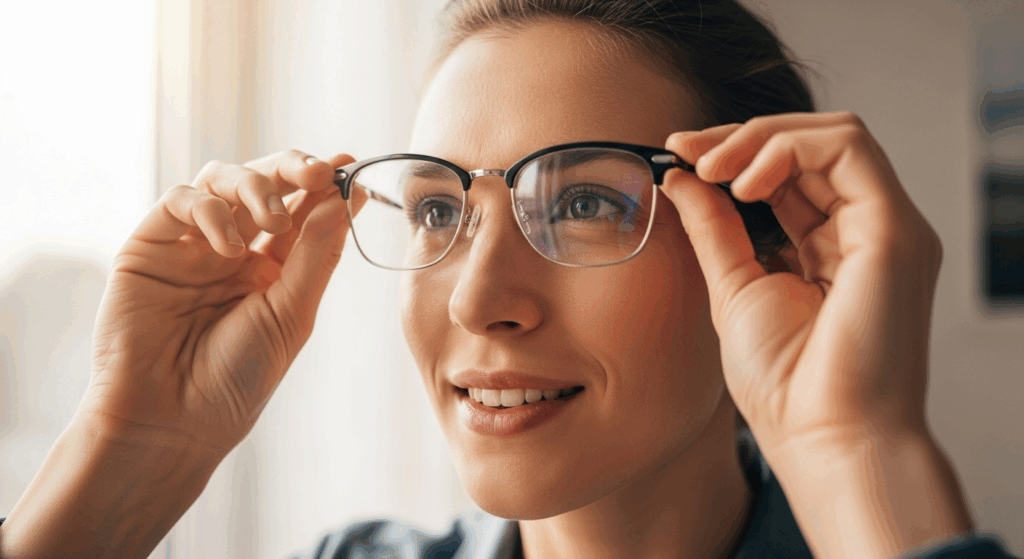
Yes, almost certainly. While you can technically “get by” without them, it’s not recommended. Trying to navigate the world with blurry vision leads to a handful of problems you can easily avoid:
- Eye Strain and Headaches: Your eyes are constantly working overtime, trying to focus. This leads to fatigue, strain, and often, persistent headaches.
- Safety Concerns: As mentioned with driving, not seeing clearly can be a safety hazard, whether you’re behind the wheel, riding a bike, or even just navigating a busy street.
- Reduced Quality of Life: Why miss out on seeing the world in high definition? From watching a movie to appreciating nature, clear vision enhances almost every experience.
The good news is that 20/50 vision is typically caused by a simple refractive error like myopia (nearsightedness) or astigmatism. These are easily corrected with a pair of eyeglasses or contact lenses prescribed by your optometrist.
Your Next Steps
If you have 20/50 vision, the path forward is clear. Getting a prescription for glasses or contact lenses will not only correct your vision to 20/20 (or close to it) but will also alleviate eye strain and make daily activities like driving much safer and more enjoyable.
Talk to your eye doctor about the best options for you. They can help you find a solution that fits your lifestyle perfectly, turning that blurry 20/50 world into a sharp, vibrant 20/20 one.
